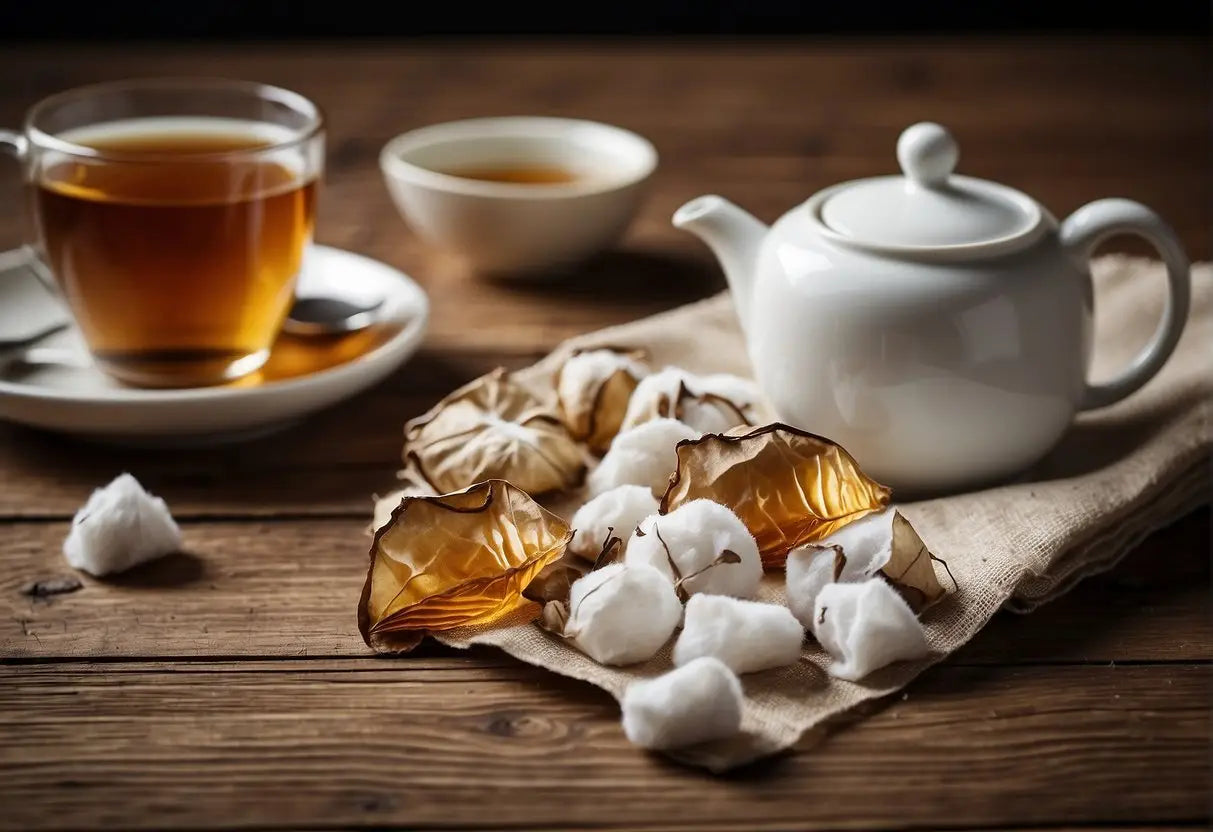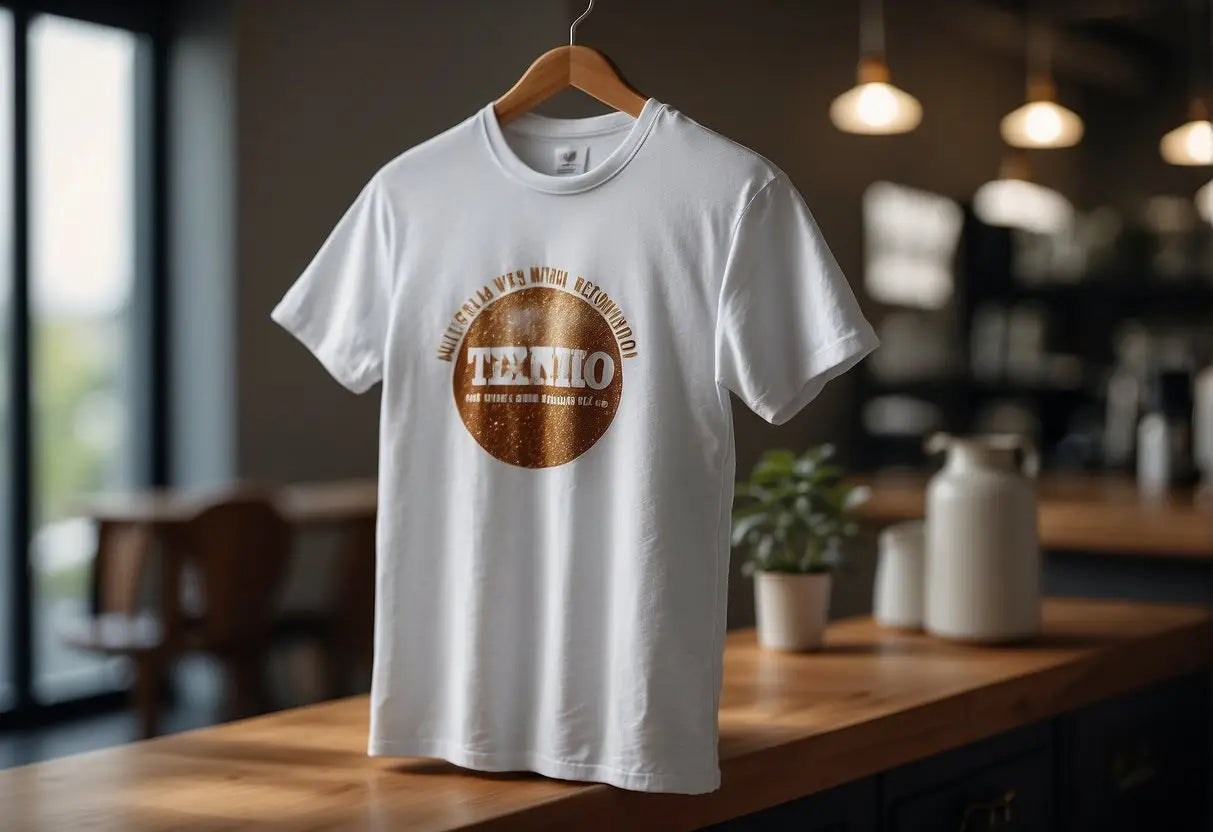How to Remove Tea Stains from Clothes
Tea contains tannins, natural plant compounds that are responsible for the stain's stubbornness. Once the tea is spilled on the fabric, the tannins adhere quickly to the material, creating a discoloration that can be challenging to remove if not treated promptly.
When tea stains clothing:
- Fresh Stains: You'll notice a light brown discoloration. Acting quickly increases the likelihood of complete removal.
- Set Stains: Over time or after heat application (such as putting clothes in a dryer), the stain darkens and sets, making it more difficult to remove.
Factors influencing stain removal:
Bestsellers
| Factor | Impact on Stain Removal |
|---|---|
| Fabric Type | Natural fibers absorb stains more deeply than synthetic, potentially complicating stain removal. |
| Stain Age | The older the stain, the more set it becomes, requiring more intense treatment. |
| Previous Treatment | The kind of cleaning agents already used can affect further stain removal efforts. Use mild detergents and avoid bleach on fresh stains. |
| Water Temperature | Generally, cold water is recommended to treat tea stains, as hot water may set them further. |
Remember, your first line of defense is to blot the stain, avoiding rubbing which can worsen the situation. Precise removal methods may vary depending on the fabric and the type of tea.
Pre-Treating the Stain
 Before attempting to remove a tea stain from your clothes, pre-treating the area is crucial. This process will help to loosen the stain, making it easier to wash out later.
Before attempting to remove a tea stain from your clothes, pre-treating the area is crucial. This process will help to loosen the stain, making it easier to wash out later.
Cold Water Rinse
Immediately rinse the stained fabric under cold water. Be sure to flush the back of the stain to push it out of the fabric rather than deeper into it. Continue until you've removed as much tea as possible.
Stain Remover Application
Apply a liquid laundry detergent or stain remover directly to the tea stain. Gently rub the solution into the stain using a soft-bristled brush or your fingers.
- Allow the stain remover to sit for at least 5 minutes.
- Do not let the stain remover dry on the fabric.
Rinsing with cold water and applying a stain remover should be your first steps toward removing a tea stain from clothing.
Choosing a Cleaning Agent
Removing tea stains from clothing requires a careful selection of cleaning agents. Each agent works differently, and your choice will depend on the fabric type and stain severity.
Detergent Usage
For most fabrics, a liquid laundry detergent is sufficient for treating tea stains. Apply the detergent directly to the stain:
- Pour a small amount of detergent on the stain.
- Gently rub the fabric together or use a soft-bristled brush.
- Let it sit for 5-10 minutes before rinsing.
Baking Soda Method
Baking soda is effective for absorbing and lifting stains:
- Create a paste with three parts baking soda to one part water.
- Spread the paste over the stain.
- Allow it to sit for up to 60 minutes.
- Brush away the residue and wash as usual.
Vinegar Solution
White vinegar is useful for mild stains and delicate fabrics:
- Mix one part vinegar with two parts water.
- Soak the stained area in the solution for 30 minutes.
- Rinse thoroughly with water.
Lemon Juice Technique
Lemon juice acts as a natural bleach, especially for light-colored fabrics:
- Squeeze lemon juice directly onto the stain.
- Let it sit in the sun for 1-2 hours.
- Rinse and launder as you normally would.
Select one of these methods based on the fabric care instructions and the age of the stain.
Washing Techniques
When dealing with tea stains on clothes, prompt action and proper washing techniques play a crucial role in ensuring stain removal.
Lao Ban Zhang
Hand Washing
For hand washing, you'll first need to:
- Act quickly to prevent the stain from setting in.
- Rinse the stained area with cold water as soon as possible.
Then, follow these steps:
- Lay your garment on a flat surface and place a towel underneath the stained part.
- Apply a mixture of 1 tablespoon white vinegar and 1/2 teaspoon liquid laundry detergent to the stain.
- Gently rub the mixture into the stain using a circular motion and an old toothbrush or your fingertips.
- Soak the garment for 15 minutes in cold water.
- Rinse thoroughly with cold water until all soap is removed.
Repeat the steps if necessary before drying.
Machine Wash
For machine washing tea-stained clothes:
- Pretreat the stain with a stain remover or a mixture of liquid laundry detergent and water.
- Allow the solution to sit on the stain for at least 5 minutes.
- Wash the garment on the hottest setting that's safe for the fabric, using your regular laundry detergent.
- Check the stain before drying. If it persists, do not place the garment in the dryer as heat can set the stain.
Use a heavy-duty detergent and oxygen bleach if the fabric's care label permits.
Post-Wash Care

After treating and washing your clothing to remove tea stains, the following steps will ensure the best possible outcome.
Air Drying
- Do not use a dryer: Heat can set the stain permanently. Always air dry your clothing after treating for tea stains.
- Choose a well-ventilated area: Hang your garment in a space with good airflow to facilitate even drying.
Inspection and Repeat
- Examine the fabric: Once your garment is dry, inspect the previously stained area in good lighting.
-
If the stain persists:
- Rewet the area with cool water.
- Reapply a stain remover or a mixture of baking soda and water.
- Gently rub the stain and rinse.
- Repeat the wash cycle.
Natural Fabric Considerations
When dealing with tea stains on natural fabrics, it's essential to carefully select your cleaning approach to maintain the integrity of the material. Natural fabrics such as cotton, linen, and silk require specific handling:
-
Cotton: This durable natural fiber can typically withstand more vigorous cleaning methods. You can safely use baking soda and white vinegar to treat stains.
- Create a paste using baking soda and water.
- Apply to the stained area, then gently scrub.
- After scrubbing, rinse thoroughly with water.
- If the stain persists, apply white vinegar before washing as usual.
-
Linen: Being less durable than cotton, linen should be treated with a milder solution like lemon juice or mild detergent.
- Gently blot the stain with a mixture of lemon juice and water.
- Do not scrub as this might damage the fabric fibers.
- Rinse thoroughly and launder as per the garment's label.
-
Silk: A delicate fabric that requires the most gentle treatment. Avoid all strong alkali-based cleaners.
- Lightly dab the stain with a mixture of lukewarm water and gentle detergent.
- Avoid rubbing to prevent ruining the texture.
- Rinse with cool water and blot gently with a soft towel.
For all natural fabrics, act quickly on stains for the best results. Test cleaning solutions on an inconspicuous area before applying to the stain, and always follow the care labels. Air-dry the garments, avoiding direct heat or sunlight to prevent additional damage. If the fabric is prone to shrinking, consider air drying flat to maintain shape.
Synthetic Fabric Considerations

When dealing with tea stains on synthetic fabrics, such as polyester or nylon, you must adjust your approach due to their unique properties.
Immediate Action:
- Blot: Gently blot the stain with a clean, dry cloth to remove excess liquid.
- Rinse: Rinse under cold water to prevent the stain from setting.
Pre-Treatment:
- Stain Remover: Apply a stain remover specific to synthetic fabrics.
- Dwell Time: Allow it to sit for 5-10 minutes.
Washing Instructions:
- Temperature: Wash with warm water, as synthetic fabrics can withstand higher temperatures than delicate ones.
- Cycle: Use a gentle cycle to prevent damaging the fibers.
Drying Tips:
- Air Dry: Avoid high heat from dryers as it can set the stain further.
- Sun Exposure: Keep synthetics away from direct sunlight to prevent fading.
Product Selection:
| Product Type | Note |
|---|---|
| Stain Remover | Must be suitable for synthetics |
| Laundry Detergent | Opt for mild detergents |
Remember, synthetic materials respond differently to treatments than natural fibers. Test any stain removal solution on an inconspicuous area first to ensure fabric integrity. Avoid using bleach on colored synthetic fabrics, as it can lead to discoloration. If the stain persists after following these steps, consider consulting a professional cleaner who specializes in synthetic fabrics.
Delicate Fabric Care
When handling delicate fabrics stained with tea, it's pivotal to treat the fabric gently to avoid damage. Begin by checking the care label for specific instructions.
Immediate Actions:
- Blot the stain gently with a white cloth.
- Avoid rubbing which can embed the stain deeper into the fibers.
Pre-treatment:
- Lay the garment flat.
- Apply a small amount of mild detergent or stain remover formulated for delicate fabrics.
- Gently tap the area with a soft-bristled brush.
Hand Washing:
- Fill a basin with lukewarm water and add a teaspoon of mild detergent.
- Submerge the garment, swirl it around carefully.
- Let it soak for 10-15 minutes.
| Do | Don't |
|---|---|
| Test any treatment on a small, inconspicuous area first. | Use hot water, which can set the stain. |
| Rinse thoroughly with cool water. | Expose the fabric to direct heat or sunlight during drying. |
Rinsing:
- Gently squeeze the fabric to remove the soap, do not wring or twist.
- Rinse until the water runs clear.
Drying:
- Lay the garment on a clean, dry towel.
- Roll up the towel to absorb excess water.
- Unblock the garment to its original shape and lay it flat to air dry.
Frequently Asked Questions

Removing tea stains from your clothes can be straightforward if you follow the right methods. Whether the fabric is white, colored, or delicate, there are specific techniques you can use to address the stain.
What home remedies are effective for getting tea stains out of fabric?
To remove tea stains, start by blotting the area with a clean cloth to absorb excess liquid. Then mix baking soda and water to create a paste and apply it to the stain, letting it sit for a few minutes before rinsing off with cold water.
What is the best way to lift tea stains from white clothing?
For white clothing, apply a mixture of equal parts distilled white vinegar and water to the stain and let it sit for up to an hour. If the stain persists, using a stain remover stick, gel, or spray before laundering as usual can be particularly effective.
How can I quickly eliminate tea stains from garments?
Acting fast is key. Rinse the stained area with cold water as soon as possible. Afterward, apply a small amount of liquid detergent to the stain and gently rub it in, then rinse it out. This method works well for a quick fix before a thorough wash.
Is it possible to remove tea stains from clothing after they have set in?
Yes, it's possible to remove set-in tea stains. Soak the garment in a solution of warm water and detergent for several hours, then launder. For stubborn stains, you may need to repeat the process or use a stronger stain remover.
Can lemon be used to treat tea stains on clothing, and if so, how?
Lemon can treat tea stains due to its natural bleaching properties. Apply lemon juice directly to the stain, or rub a cut lemon over it, and then expose the garment to sunlight for one to two hours before rinsing and washing.
Are there methods to successfully remove tea stains from colored fabrics?
Yes, to remove tea stains from colored fabrics without affecting the dye, test a mixture of water and oxygen-based bleach on an inconspicuous part of the garment first. If there's no color change, apply it on the stain and soak before rinsing and laundering.
← Older post Newer post →











